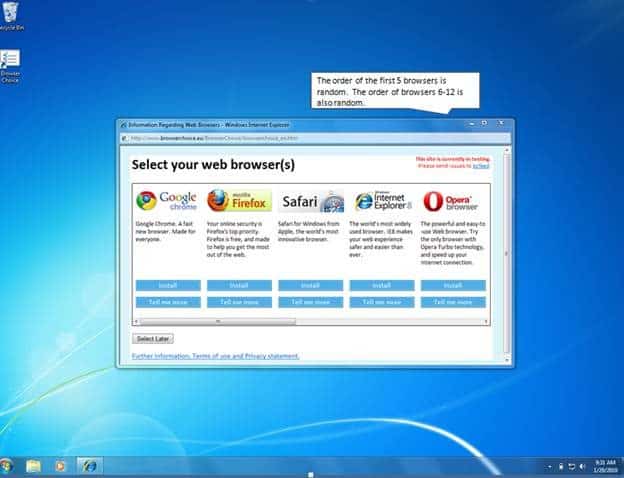If you have followed the news you know that Microsoft is going to introduce the browser choice screen, often also called browser ballot screen, to European users from March 2010 on.
Microsoft plans to run an external test in some European countries including England and Belgium first, and will expand the delivery to all countries of the European Union later.
The browser choice screen will be delivered via Windows Update. Computer systems with automatic update turned on will automatically download the update to the computer system.
The browser screen will be displayed on the next reboot if the user logging on is using Microsoft’s Internet Explorer as the default browser.

The program will then unpin Internet Explorer from the taskbar and display information about the process along with the browser choice screen that displays the top five web browsers in the world in random order plus additional web browsers that become visible after scrolling vertically.
The top five browsers are Internet Explorer, Firefox, Google Chrome, Opera and Safari. It is not yet clear what the other browsers are.

A browser can then be installed from the browser choice screen. It is furthermore possible to display additional information about a web browser.
There are two problems associated with the process. The first is that the update is forced upon the users meaning that many Windows users will notice that their “Internet” is gone. With Internet we mean Internet Explorer. Removing the link from the taskbar is not a very clever idea in our opinion. A better way would be to ask the user whether to remove the Internet Explorer pinned tab from the taskbar if another web browser is picked for installation in the browser ballot screen.
So, many users will notice that the Internet Explorer icon is gone and be completely clueless about it. Yes, the process is explained when you open the browser ballot screen but we all know that most users are not reading most of the system messages and information presented to them. This could mean chaos.
The second problem is company networks and private networks where Internet Explorer has to be used. These need to block the update so that it is not installed by accident which could turn into a support nightmare for those companies.
What is your opinion about the browser choice screen in Windows in Europe?